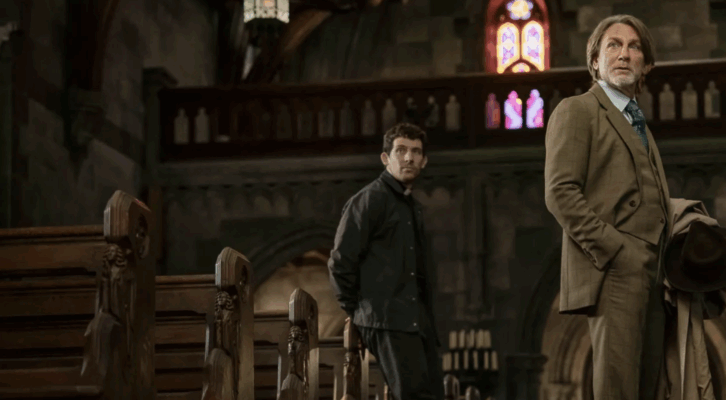When I was a little girl, my grandmother asked the typical question, “What do you want to be when you grow up?” and I answered truthfully that I wanted to be a police officer. Honestly, I probably said “policeman,” because I was young and it was the 80s, and that was the term everyone used, but I knew what I meant.
My grandmother laughed and told me that girls weren’t police officers, suggesting other, more suitable career choices like teacher or nurse. I’d watched enough episodes of Miami Vice by then to know that girls certainly could be police officers, and detectives, and catch bad guys, even if they had to do it in a skirt, but I kept the argument to myself.
What I had seen of women in law enforcement—mostly fictional on TV—was not an accurate portrayal of those times and didn’t even come close to the work women in law enforcement would have been responsible for during my grandmother’s Depression-era childhood. The exception being, of course, doing it all in a skirt and heels.
Not just the workload, but the acceptance of women in the police world came in staggered waves through the decades, beginning in the mid nineteenth century. Communities fluttered between the ideas of a need for women in the profession and conservative ideals of womanhood that required they leave such work to the men and keep focused on their own households instead.
It was that exact conservatism that opened the doors of the station to women. The campaign started in New York with the Women’s Christian Temperance Union, the National Women’s Suffrage movement, along with others, who voiced concern over women and girls being monitored by male jailers and in male prisons.
Attention to the matter grew after the death of a New York prisoner named Rachel Welch. She’d become pregnant while incarcerated, despite being held in solitary confinement, and was beaten as punishment both before and after giving birth.
The beating was believed to play a hand in the young woman’s death and outraged communities pushed for changes after her violent death. While initial plans to create a women’s prison were initially voted down due to the free labor for the prison the women provided, the death of the young Irish immigrant did bring changes and the role of police matron was eventually born.
By 1893, the role of police matron spread from New York to the new city of Seattle, where competition for the role was cutthroat. A widowed dressmaker with two grown children, Emma Taylor, ultimately won the position despite having no formal training in law enforcement or social work. Her husband had recently died at sea, and her son died in San Francisco under mysterious circumstances shortly after she was hired, leaving Emma and her daughter to care for themselves.
But the work was more than a way to make ends meet and she met each challenge with purpose. Emma believed the matron’s role was important for the protection of the most vulnerable in her community. Like most other Police Matrons, she was on-call 24/7, was responsible for her expenses, and made a paltry thirty dollars a month. She eventually requested her own room at the police station because her earnings were not enough to cover her expenses that included transportation, and the cost of having a telephone.
Emma Taylor worked tirelessly for seven years as the only police matron in Seattle. During that time, she was responsible for any woman or child with reason to be in the care of police, suspects, victims, and witnesses alike.
While she struggled to pay for her own expenses and the expenses related to her work, she often provided personal goods, clothing, and streetcar fare to those in her care. She embraced her work and helped demonstrate the benefit of community outreach in law enforcement. When she died at age fifty-three, after seven years on the job, the city of Seattle hired two new matrons to take over her workload.
At the turn of the century the matron position had evolved to include community patrol divisions and the first officially sworn women officers in California and Oregon. Many early hires had formal educations in social work and their duties continued to focus on the community aspect of policing. They advocated for the need of a mothering touch in communities and encouraged guidance and reform over punishment.
These women officers would assist in undercover stings with vice units but were not allowed to patrol their own beats or compete with the men for promotion, working only within women’s divisions. The end of World War II saw another change of duties for women officers, with more being locked into clerical duties and dispatch positions with fewer opportunities outside of the office.
For decades women continued to join police forces around the country despite the restrictions put on them. They fought against biases and regulations that favored men and limited their opportunities.
They continued to show their skills as part of undercover vice units and fight for promotions and better pay. And they fought against those who still said they didn’t belong on the job despite decades of benefit to their communities.
It wasn’t until the civil rights movement, when laws were changed to prevent discrimination based on gender, that women officers were finally allowed into the same spaces as their male counterparts. It was the city of Indianapolis that took the first step in equality when officers Betty Blankenship and Elizabeth Robinson signed on for duty in car 47 as the first female patrol officers in the U.S..
Although, they still had to do the job in a skirt and heels, and they kept their service weapons in a duty purse instead of on a duty belt, women were finally making strong career advances in law enforcement. In 1972, after additional advances in civil rights, they also finally found their way into federal law enforcement agencies. Women had been denied roles at that agency under the rule of J. Edgar Hoover, but doors were opened after his death and two women were sworn in as agents of the FBI.
Susan Malone, a civic-minded Marine Corps veteran, and JoAnne Misko, a nun who taught history in high schools, were sworn in as the first female FBI agents. Both had successful careers full of “firsts.” Malone would be the first female agent to make an arrest in the field, while Misko would be one of the first female supervisors at FBI Headquarters. At the time of her retirement in 1994, Misko was the longest-tenured female agent in FBI history.
After the changes in civil rights laws led to more open doors for women, we saw the rate of women officers rise from around two percent to currently being around fifteen percent nationally. Obviously, that number varies depending on where in the country you are, but advancements are still happening.
Women have found their way into the roles they were previously kept from—patrol officers, detectives, police chiefs, sheriffs, special agents, and Attorneys General. They lead divisions and departments in small towns and sprawling cities in roles my depression-era grandmother could not have imagined in her youth and they no longer have to do it in heels.
***


















